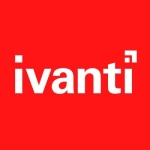I am an IT support engineer. I take care of all IT projects in my organization. I have implemented Intune and onboarded thousands of devices over Intune. I'm not an end-user. I am supporting our employees with IT policies.
I can reach devices or computers over the internet. I don't need to worry about the network connectivity between the offices. I can manage any device. That is the most important part.
The Mobile Application Management (MAM) policy is also valuable. I can control applications, and I can secure applications by using the MAM policy. It is very effective and very helpful in protecting our users' data on mobile devices such as iPhones, Android phones, etc. I can apply policies, and I can protect user data.
I can also deploy the software and applications and do configurations. Windows autopilot is there. It is like self-provisioning on employees' computers. That is also an important part.
The most important thing is reporting. They should improve their reporting. They should give a free hand to users. In SCCM, I can create my own reports. For example, in SCCM, I can create an inventory report for my PC or for all PCs, but in Intune, we don't have an option to create any report. Microsoft claims that Intune is a successor of SCCM, but SCCM is more powerful than Intune. So, they should develop Intune more and make it equivalent to SCCM. Then, their product will be great in the market.
If I want to deploy an application, I cannot add multiple schedules. I can add only one schedule, and I need to rely on that. Adding multiple schedules over a period of time is not possible at this time.
I cannot evaluate any setting before deploying anything. In SCCM, we have the Compliance Baseline feature. If I want to check any service or anything else, I can do that, but in Intune, that is not available. There are very few compliance policies. They say whether your device is compliant or not, but if they don't provide enough and better compliance policies, why should I be compliant with those policies? They should give more options for the compliance policies so that we can choose something better, and we can make our devices comply with those policies.
It lacks in terms of analytics. Analytics and all such things are not good, which again comes down to the reporting part. It should be better in terms of analytics and reporting.
It also lacks in terms of automation. If we want to automate some of the things, we need to spend more time on automation. Other tools in the market are giving better automation graphically. So, they can work on that part.
Their support should also be improved. They don't know about their own product.
I have been using this solution for the last six months.
It is very stable. So, whatever features they provide are working great. There are no problems with those features.
My experience with them was very bad. They don't know about their own product. I know better than them by going through their articles and other resources. When I ask them anything, they come up with silly answers. They are making me feel frustrated. I have had a very bad experience with their support.
Its initial setup is very easy. We don't need to deploy any servers anywhere. With just a few clicks, we can set up Intune. We just need to set the MDM authority, and we need to set the automatic enrollment. That's it.
Most of the mobile device management tools are giving the same facility. I don't have experience with VMware Workspace ONE, but I have been reading about it. VMware Workspace ONE also gives similar features in a slightly different way, but the objective of all such tools is the same.
I would rate Microsoft Intune a five out of 10 because they are still developing it.


















